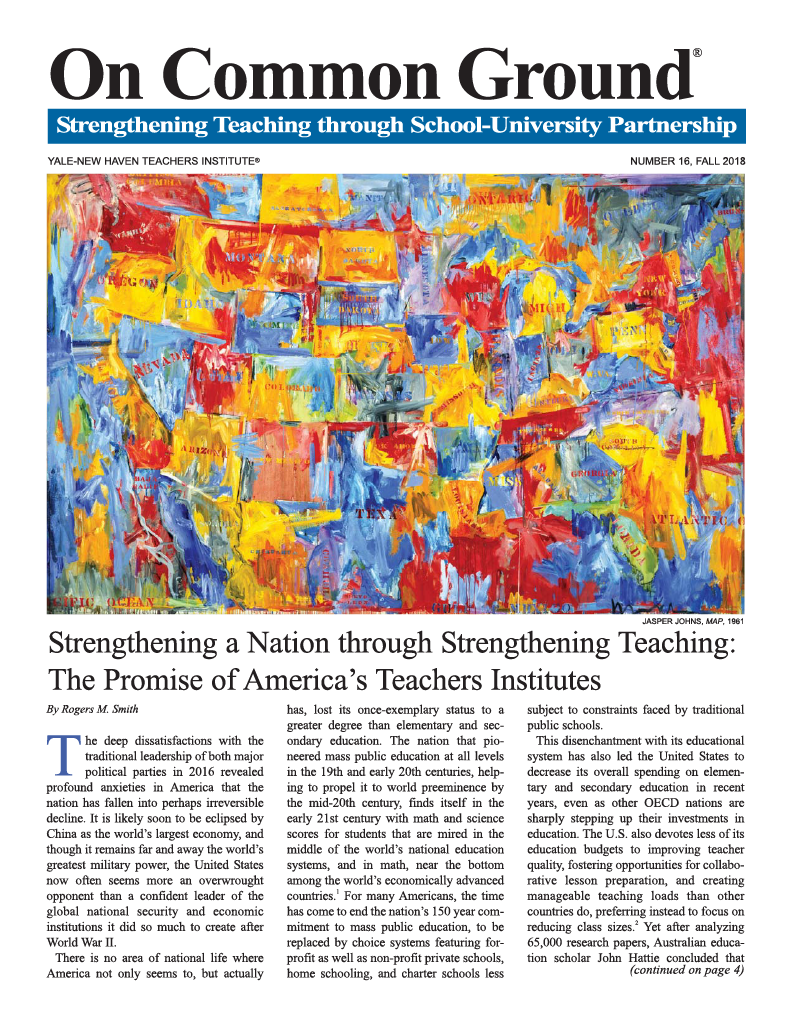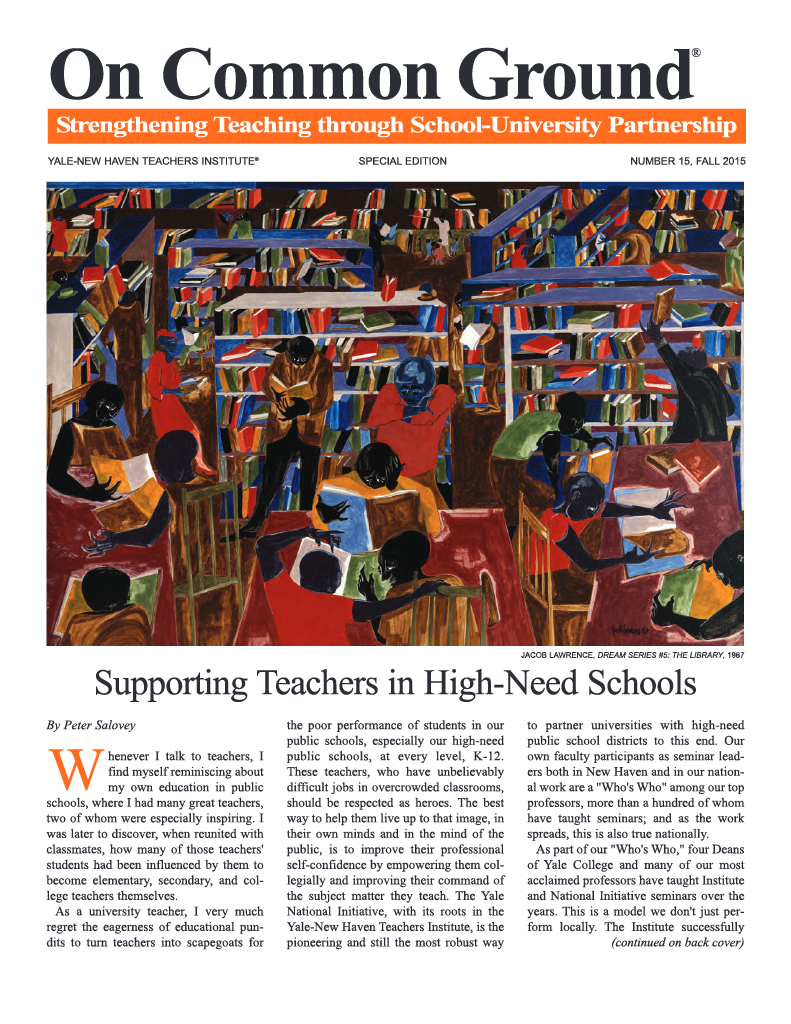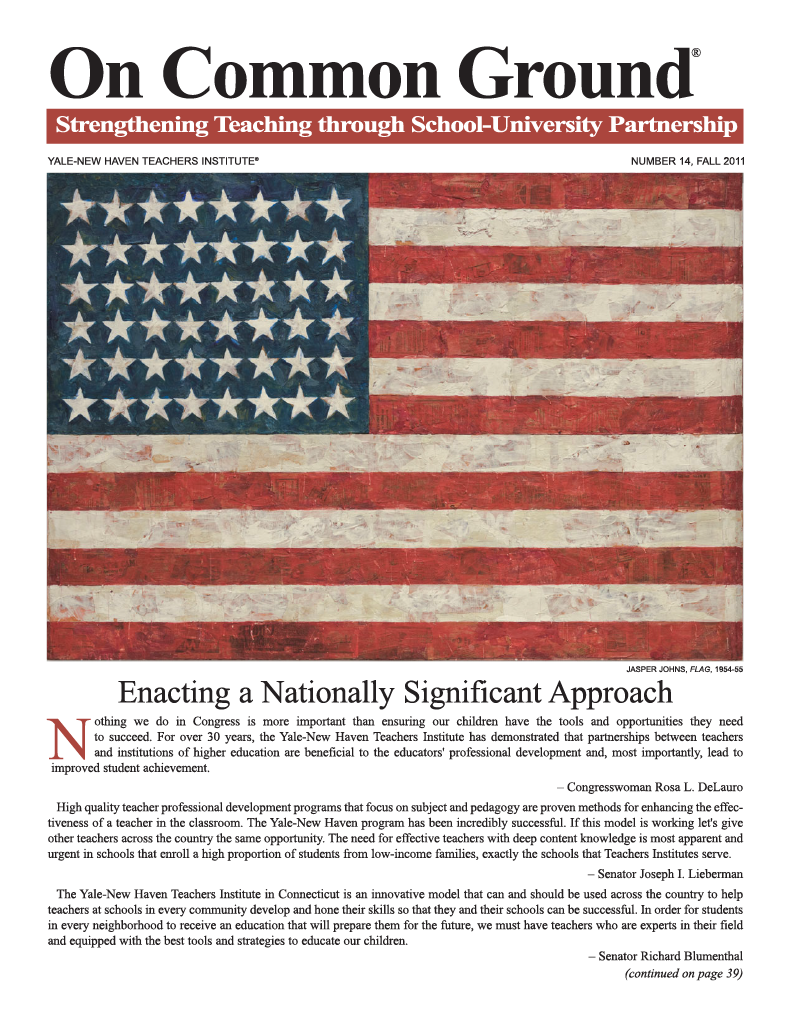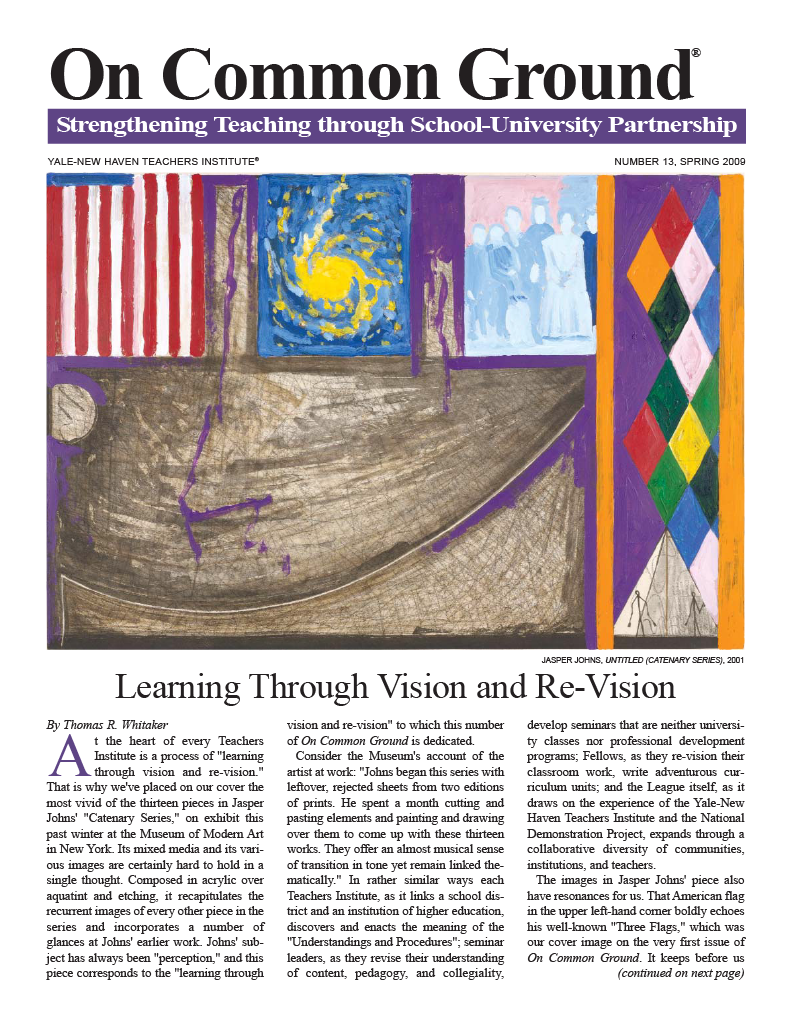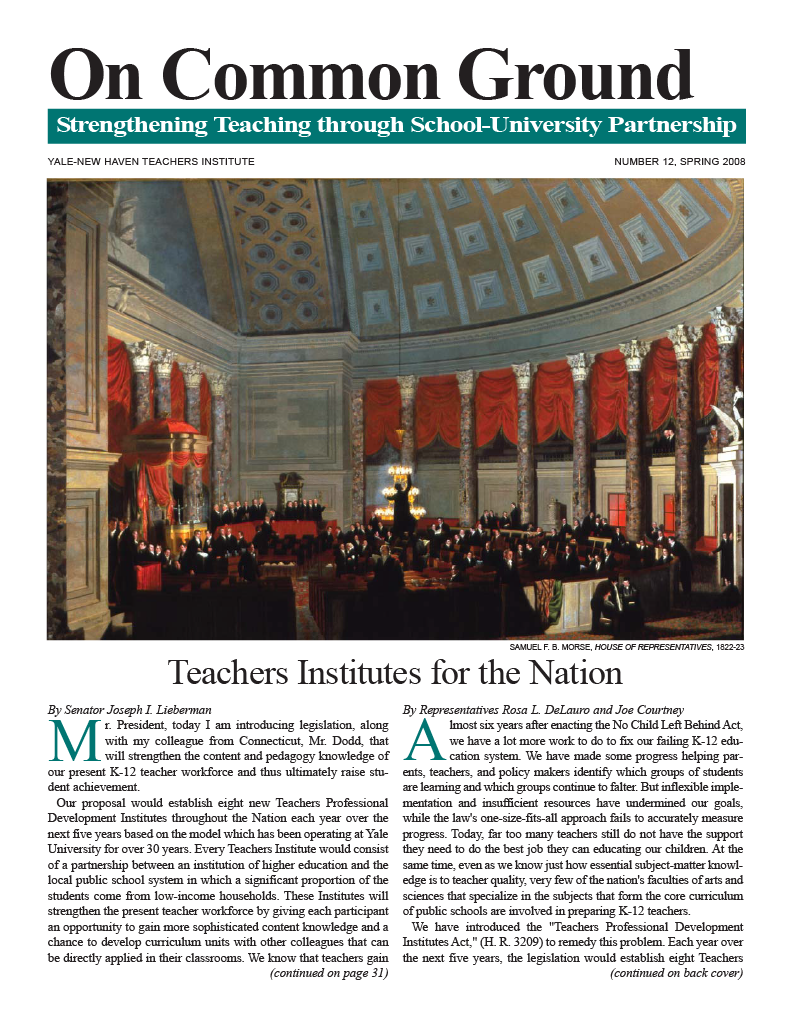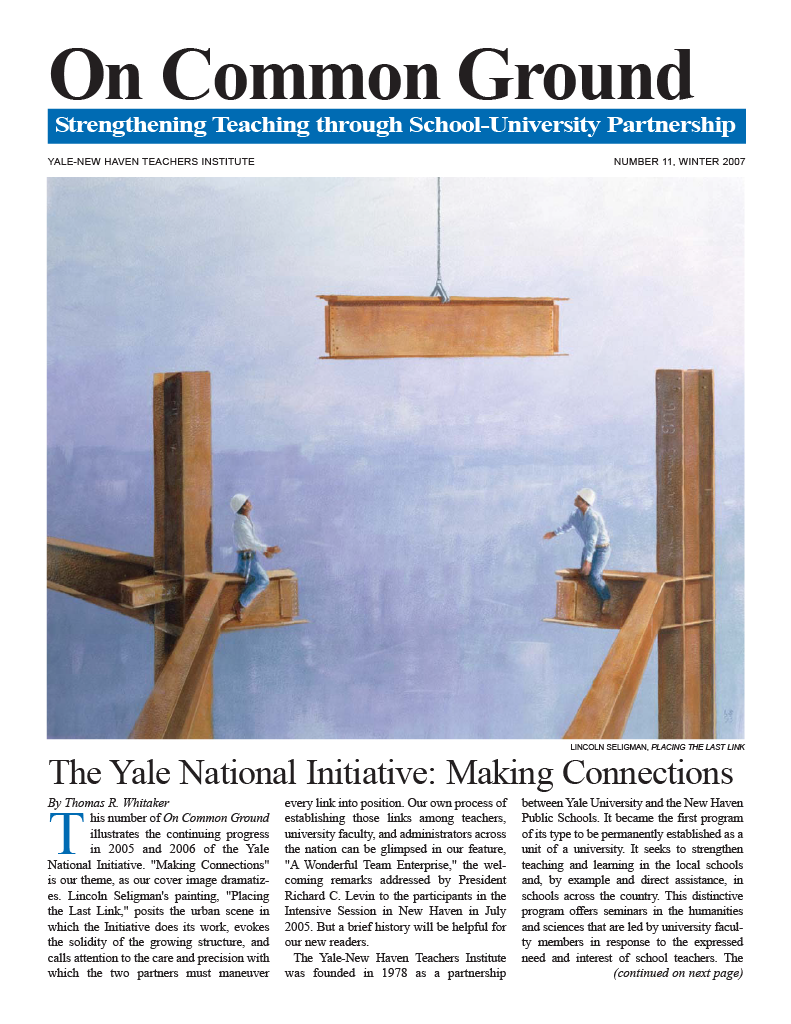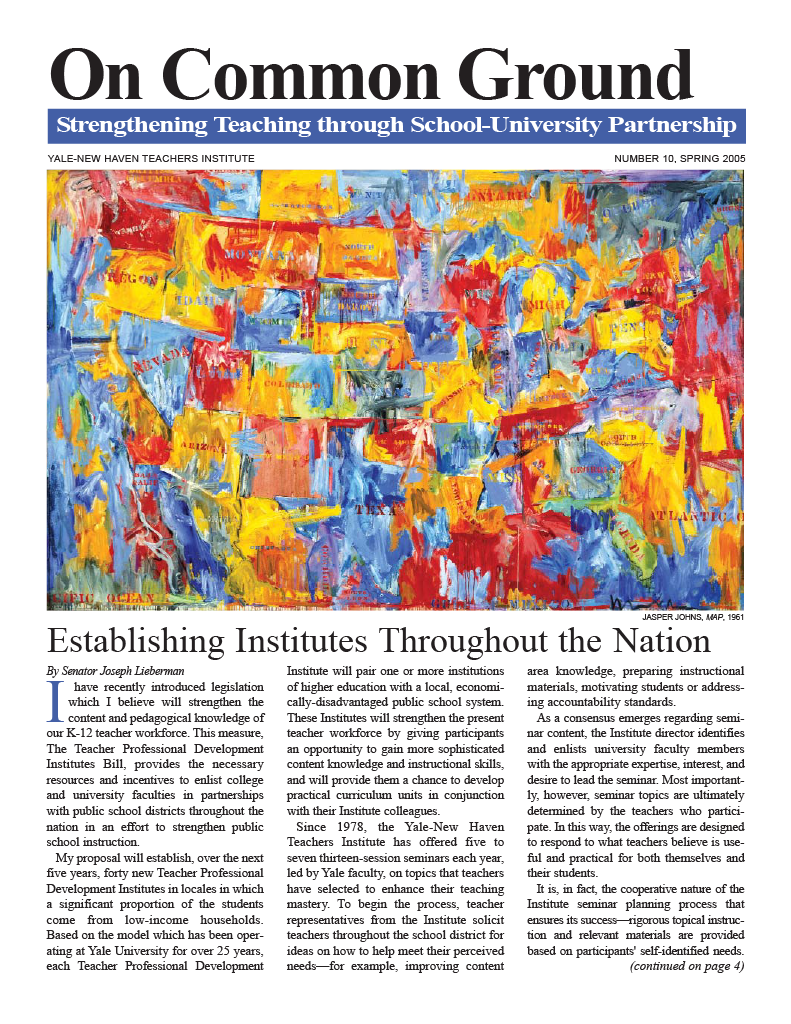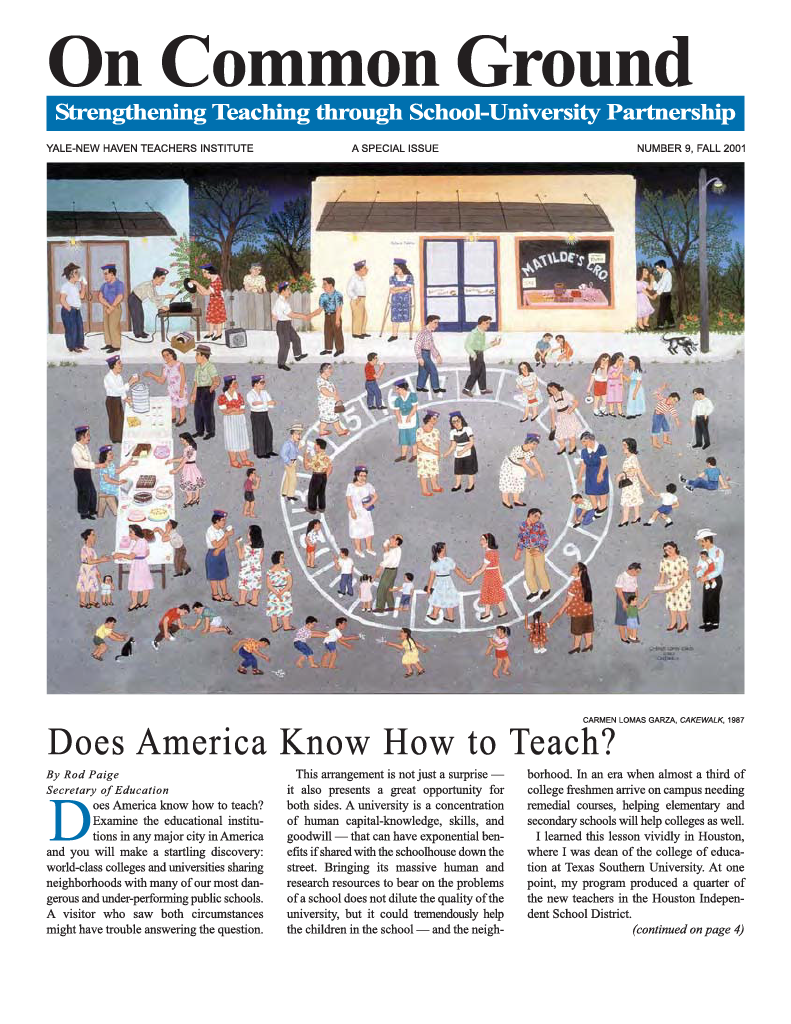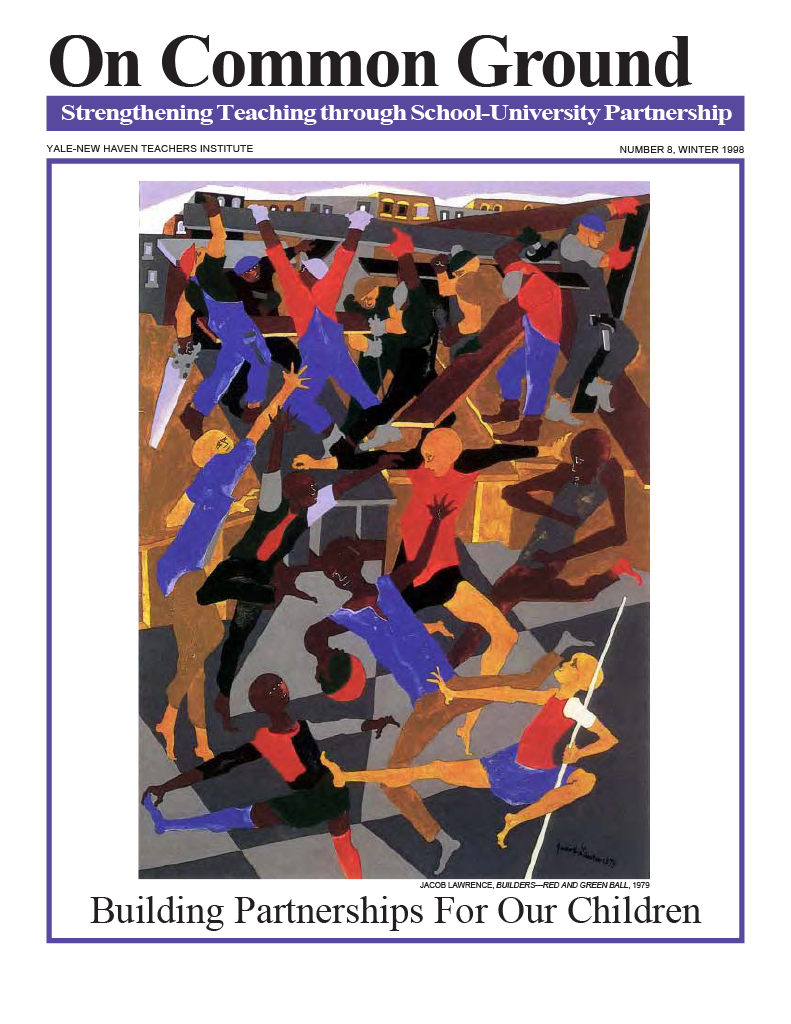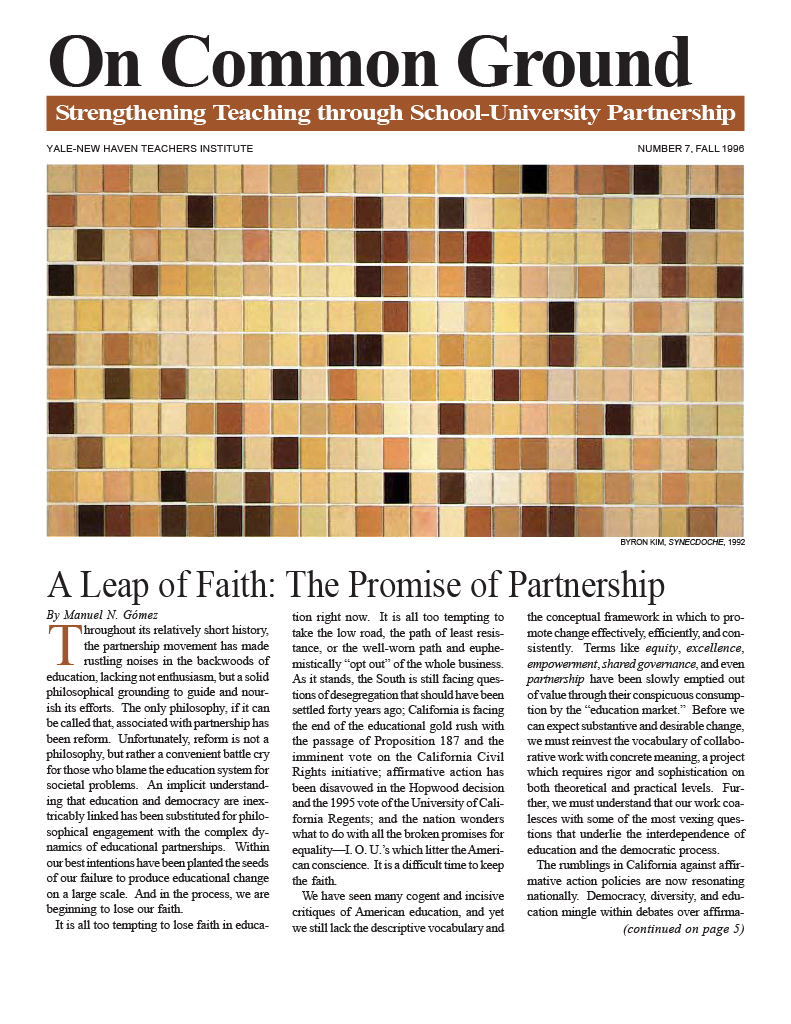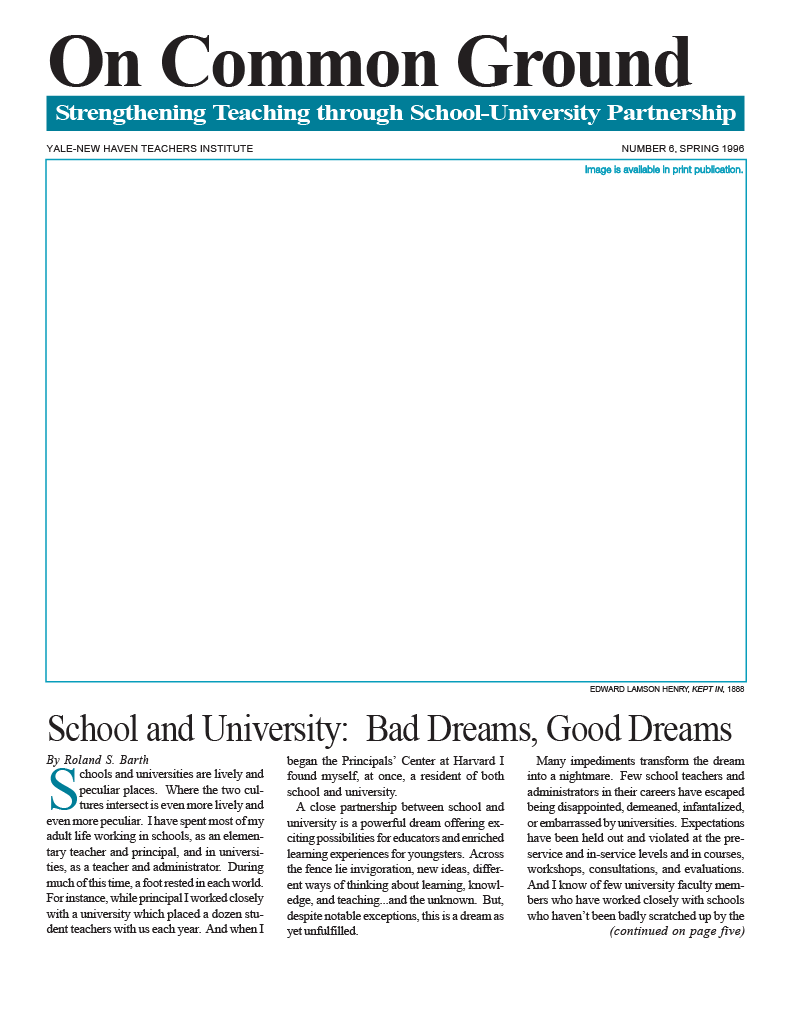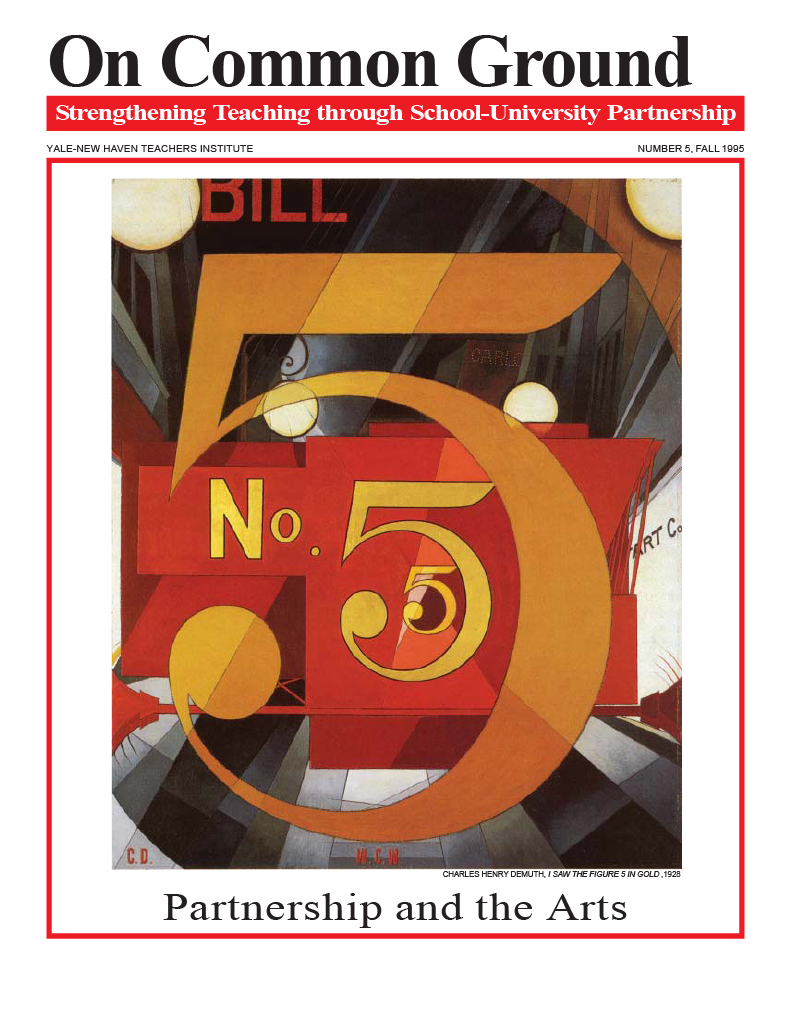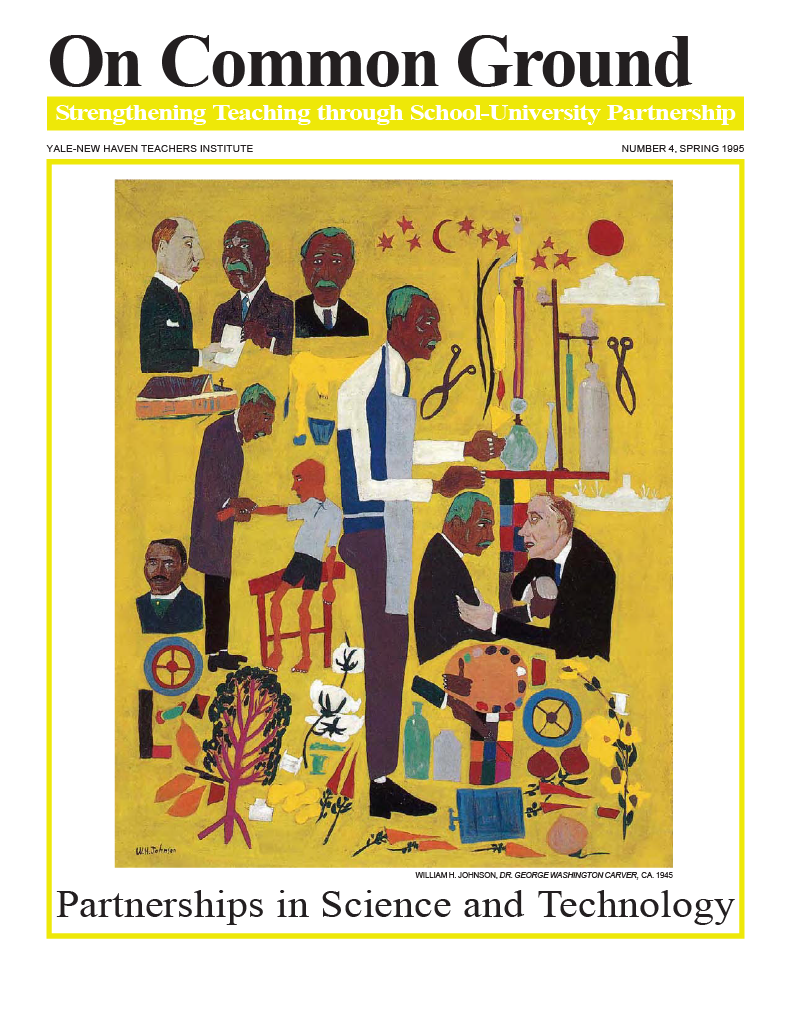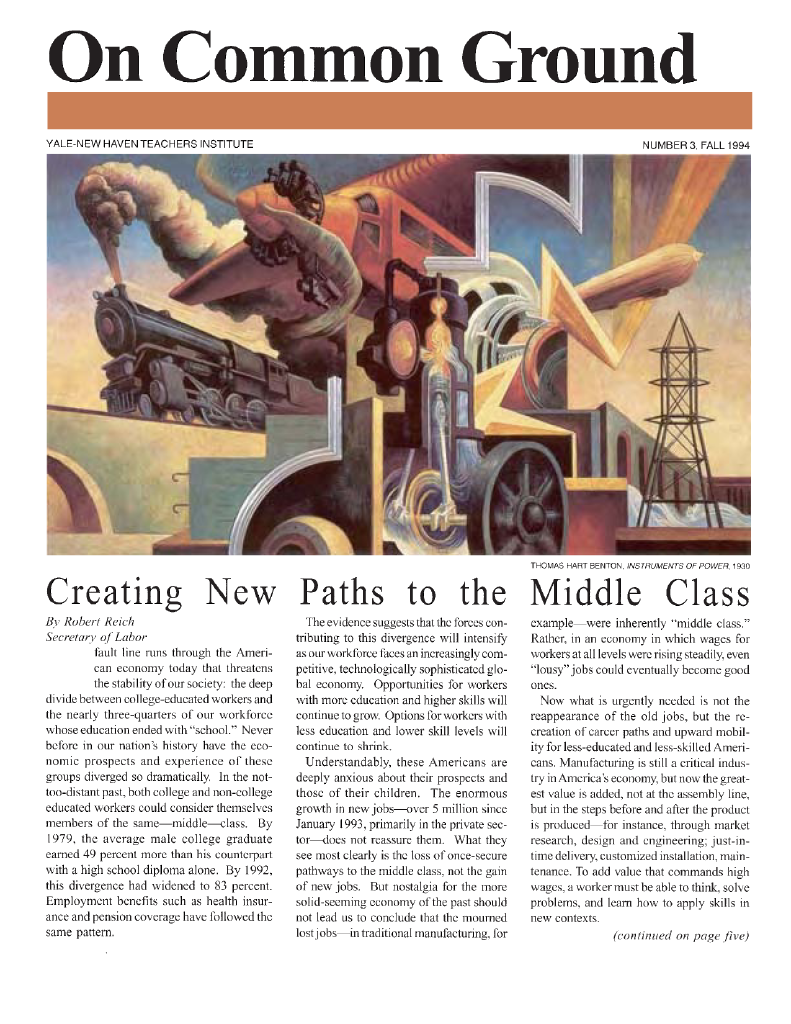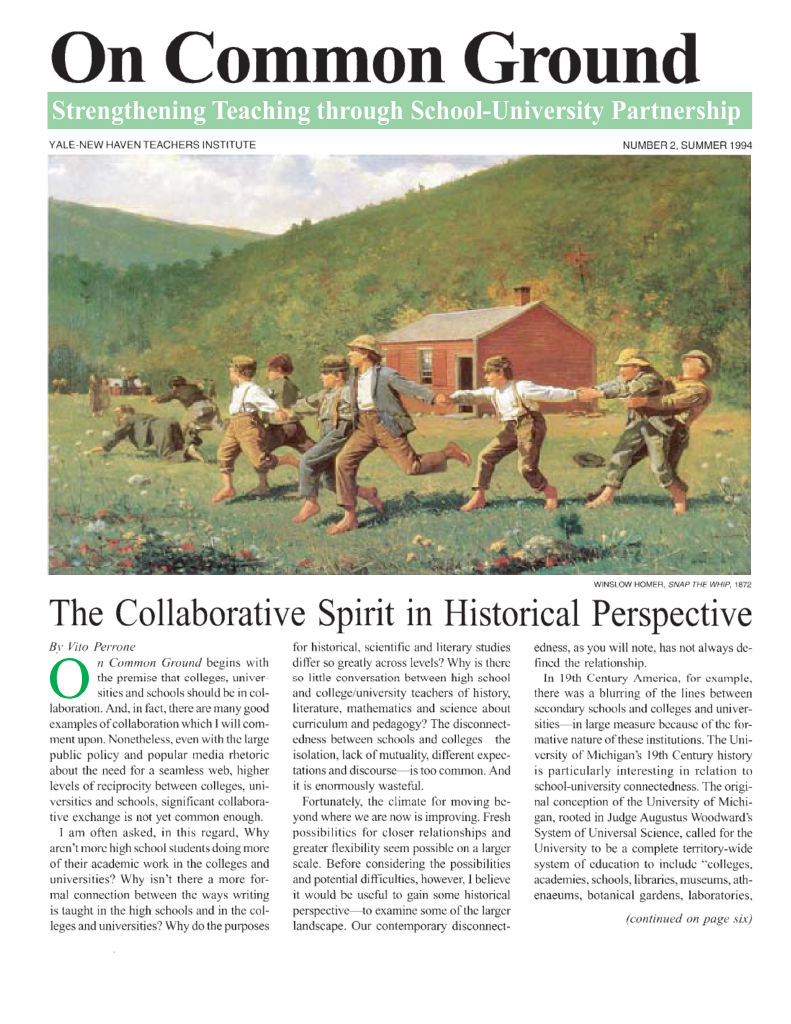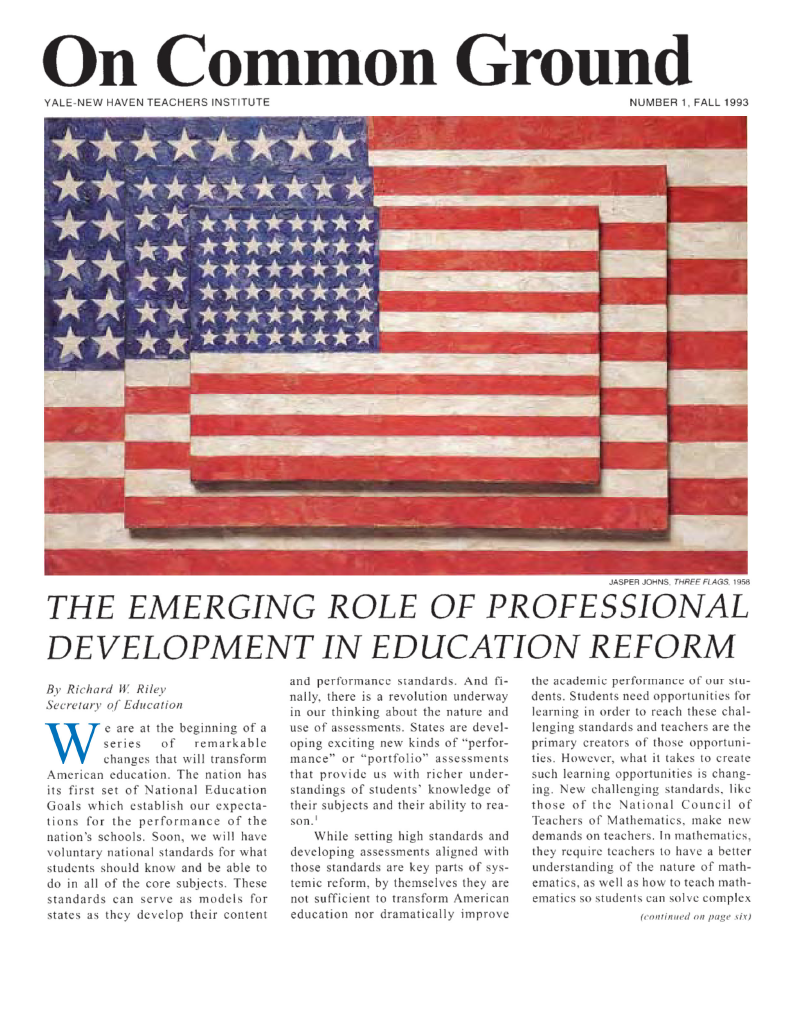On Common Ground®
On Common Ground is concerned with the development of teachers and of their curricula through school-university partnerships. Its title, which derives from that of the first book on the Yale-New Haven Teachers Institute's work, Teaching in America: The Common Ground, is intended to suggest that university faculty and school teachers have a strong mutual interest in the improvement of teaching and learning in schools. Since 2005 the periodical has focused on the work of the Yale National Initiative to strengthen teaching in public schools®.

